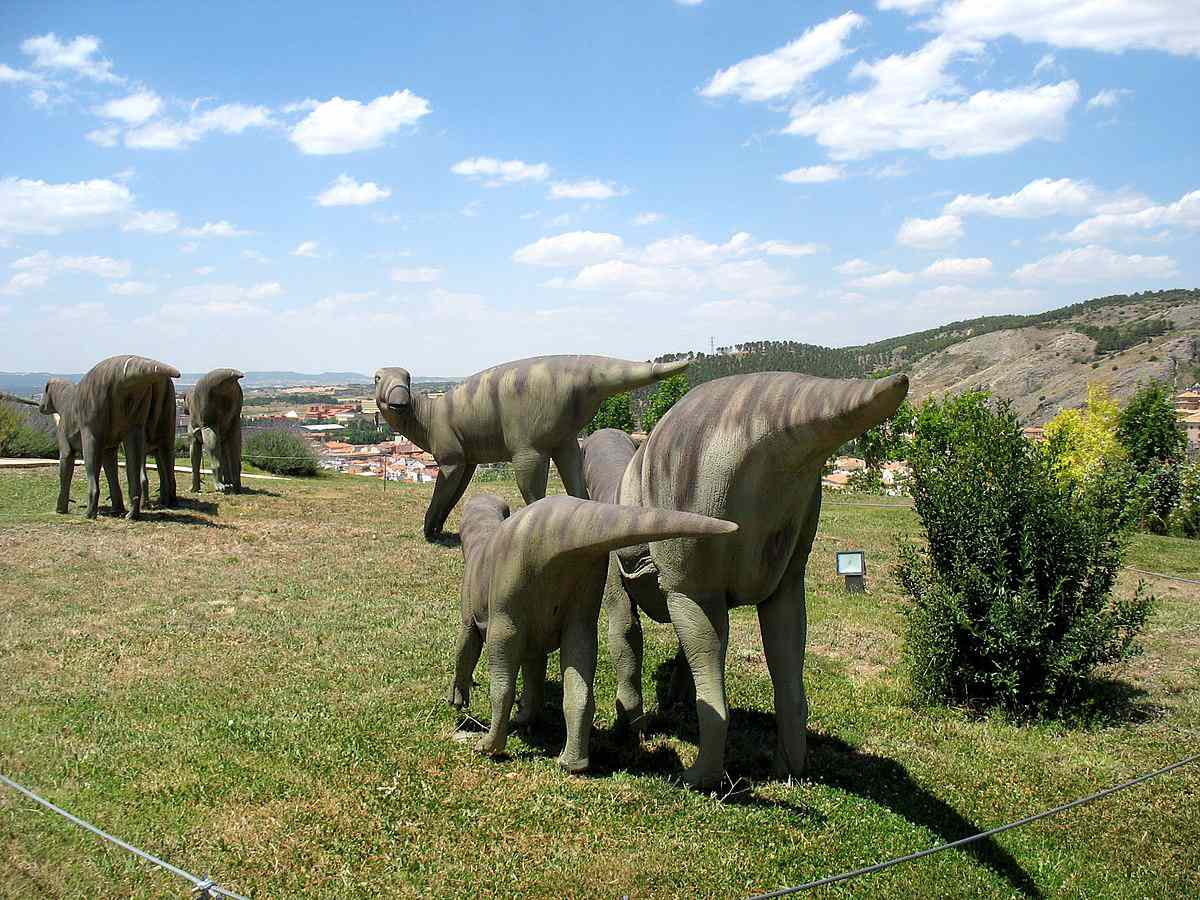
Ever wondered about the giants that roamed Earth millions of years ago? Well, let's talk about one of the most fascinating of them all: the Iguanodon. These magnificent creatures were among the first dinosaurs to be discovered, sparking curiosity and awe worldwide. What made Iguanodon stand out in the dinosaur kingdom? For starters, their unique build and the mystery of their 'thumb spikes' have puzzled scientists for ages. Were they for defense, or perhaps for foraging? Plus, their ability to walk on both two and four legs adds another layer of intrigue. Dive into the world of Iguanodons with us, and let's uncover some of the most intriguing facts about these ancient behemoths. From their diet to their discovery and everything in between, you're in for a real treat!
Key Takeaways:
- Iguanodons were fascinating dinosaurs with thumb spikes, unique teeth, and the ability to walk on two or four legs, making them adaptable and efficient herbivores.
- The discovery and study of Iguanodons have had a lasting impact on paleontology, influencing dinosaur research, cultural imagination, and educational materials, sparking interest in prehistoric life.
What Is an Iguanodon?
Iguanodon, a name meaning "iguana-tooth," was a genus of dinosaur that lived approximately 125 million years ago during the early Cretaceous period. These fascinating creatures were among the first dinosaurs to be discovered and named, making them a significant part of paleontological history. Known for their distinctive thumb spikes, which could have been used for defense or foraging for food, Iguanodons were large, herbivorous dinosaurs that roamed the earth in what is now Europe and possibly North America.
Unique Features of Iguanodons
-
Thumb spikes – One of the most distinctive features of Iguanodons is their large thumb spikes. Scientists believe these could have been used as a defense mechanism against predators or to help them gather food.
-
Bipedal and quadrupedal – Iguanodons were unique in their ability to walk on both two legs and four. This adaptability suggests they could switch between bipedalism for speed and quadrupedalism for grazing.
-
Teeth – Their teeth were specially adapted for grinding plant material, making them efficient herbivores. The structure of their teeth gave them their name, as they resembled those of modern iguanas.
Iguanodon Discovery and Significance
-
First discoveries – Iguanodon was one of the first dinosaurs ever discovered, with fossils initially found in the early 19th century. This discovery was pivotal in the field of paleontology, helping to establish the concept of extinct giant reptiles.
-
Mantell's contribution – The genus was named by English geologist Gideon Mantell in 1825. Mantell's work was instrumental in the study of Iguanodons and contributed significantly to our understanding of dinosaurs.
Iguanodon's Habitat and Behavior
-
Wide range – Fossils suggest that Iguanodons lived in a variety of environments, from dense forests to open plains. Their adaptability in diet and mobility likely helped them thrive in different habitats.
-
Social creatures – Evidence points to Iguanodons being social animals, possibly living in herds. Living in groups would have provided protection against predators and enhanced their ability to find food.
The Diet of Iguanodons
- Herbivorous diet – Iguanodons were plant-eaters, with a diet that likely included ferns, cycads, and conifers. Their teeth were well-suited for grinding vegetation, allowing them to consume a wide variety of plant materials.
Iguanodon Fossils Around the World
-
Global discoveries – While the first Iguanodon fossils were discovered in England, subsequent finds have been made in Belgium, Germany, Spain, and even North America. These discoveries have helped scientists piece together a more comprehensive picture of the dinosaur's distribution and lifestyle.
-
Bernissart Iguanodons – One of the most significant finds was in Bernissart, Belgium, in the late 19th century, where over 30 nearly complete Iguanodon skeletons were unearthed. This find greatly increased our understanding of the species.
The Legacy of Iguanodon
-
Influencing dinosaur research – The discovery and study of Iguanodon have had a lasting impact on the field of paleontology, influencing how dinosaurs are understood and studied.
-
Cultural impact – Iguanodon has captured the public imagination, appearing in literature, film, and even as part of the Crystal Palace Dinosaurs, some of the world's first dinosaur sculptures, making it an iconic figure in popular culture.
-
Educational role – As one of the first dinosaurs to be named and studied, Iguanodon plays a crucial role in educational materials about dinosaurs, helping to spark interest in paleontology among generations of learners.
-
Scientific relevance – Ongoing research into Iguanodon fossils continues to provide valuable insights into the Cretaceous period, dinosaur biology, and the evolution of herbivorous dinosaurs.
-
Conservation of fossils – The preservation and study of Iguanodon fossils are vital for understanding Earth's biological and geological past, highlighting the importance of fossil conservation efforts worldwide.
-
Inspiring future discoveries – The history of Iguanodon discovery and research inspires paleontologists to continue exploring, uncovering new dinosaur species, and deepening our understanding of prehistoric life.
-
Adaptation and evolution – Studying Iguanodon helps scientists understand how dinosaurs adapted to their environments and evolved over millions of years, offering clues about survival and extinction.
-
Comparative anatomy – By comparing Iguanodon fossils to those of other dinosaurs and modern animals, researchers can gain insights into the anatomy and function of dinosaur bodies, including locomotion, feeding mechanisms, and more.
-
Paleoecology – Iguanodon fossils, including those found in different locations and geological layers, provide valuable information about the ecosystems of the past, including climate, vegetation, and the interaction between species.
-
Public engagement – Exhibits and programs featuring Iguanodon fossils play a significant role in engaging the public with science and history, fostering a deeper appreciation for the natural world.
-
Technological advances – The study of Iguanodon has benefited from advances in technology, including 3D scanning and digital modeling, which allow for more detailed analysis and visualization of fossils.
-
Collaborative research – International collaborations among scientists studying Iguanodon and other dinosaurs have led to significant advancements in our understanding of these ancient creatures, demonstrating the value of global scientific cooperation.
-
Educational resources – Iguanodon remains a popular subject in educational resources, from textbooks to interactive online platforms, helping to educate students and enthusiasts about dinosaur science.
-
Cultural significance – Beyond its scientific importance, Iguanodon holds a special place in the cultural heritage of the regions where its fossils have been found, contributing to local histories and identities.
A Glimpse into the Mesozoic Era
Diving into the world of the Iguanodon, we've uncovered some fascinating facts about these ancient creatures. From their unique thumb spikes used for defense to their role as early herbivores shaping the prehistoric landscape, Iguanodons offer a window into a world millions of years past. Their discovery not only marked a significant milestone in paleontology but also challenged our understanding of dinosaur behavior and evolution. As we've journeyed through the intriguing aspects of their existence, from their social behavior to their speculated appearance, it's clear that Iguanodons were more than just giant lizards; they were complex beings adapting to the challenges of their era. This peek into their lives enriches our appreciation for the diversity and adaptability of life on Earth, reminding us of the ever-changing nature of our planet.
Frequently Asked Questions
Was this page helpful?
Our commitment to delivering trustworthy and engaging content is at the heart of what we do. Each fact on our site is contributed by real users like you, bringing a wealth of diverse insights and information. To ensure the highest standards of accuracy and reliability, our dedicated editors meticulously review each submission. This process guarantees that the facts we share are not only fascinating but also credible. Trust in our commitment to quality and authenticity as you explore and learn with us.


